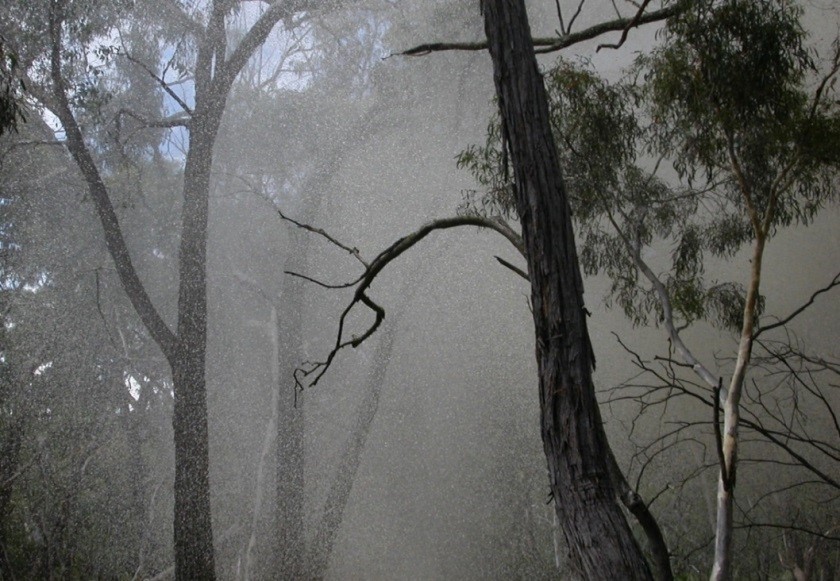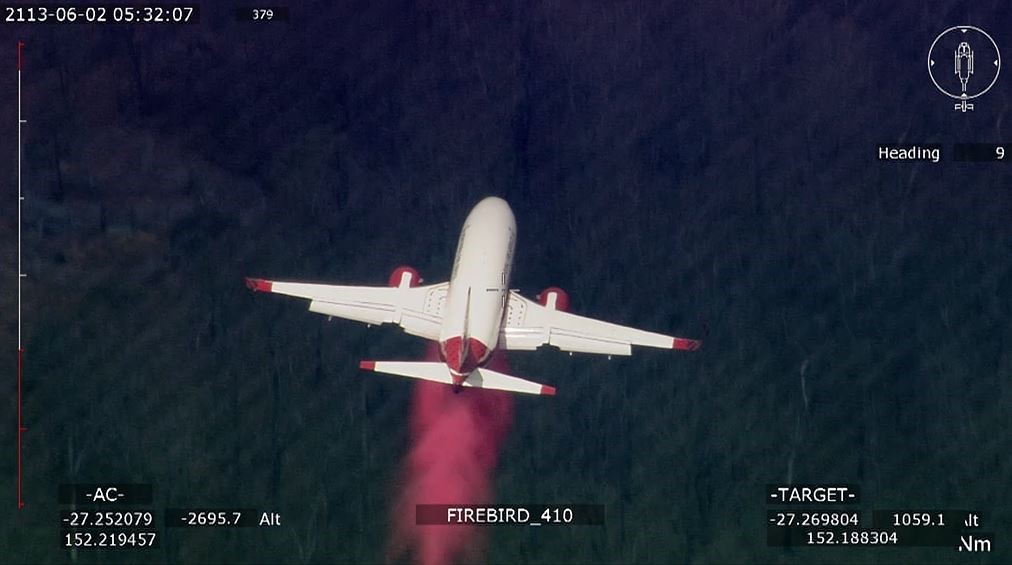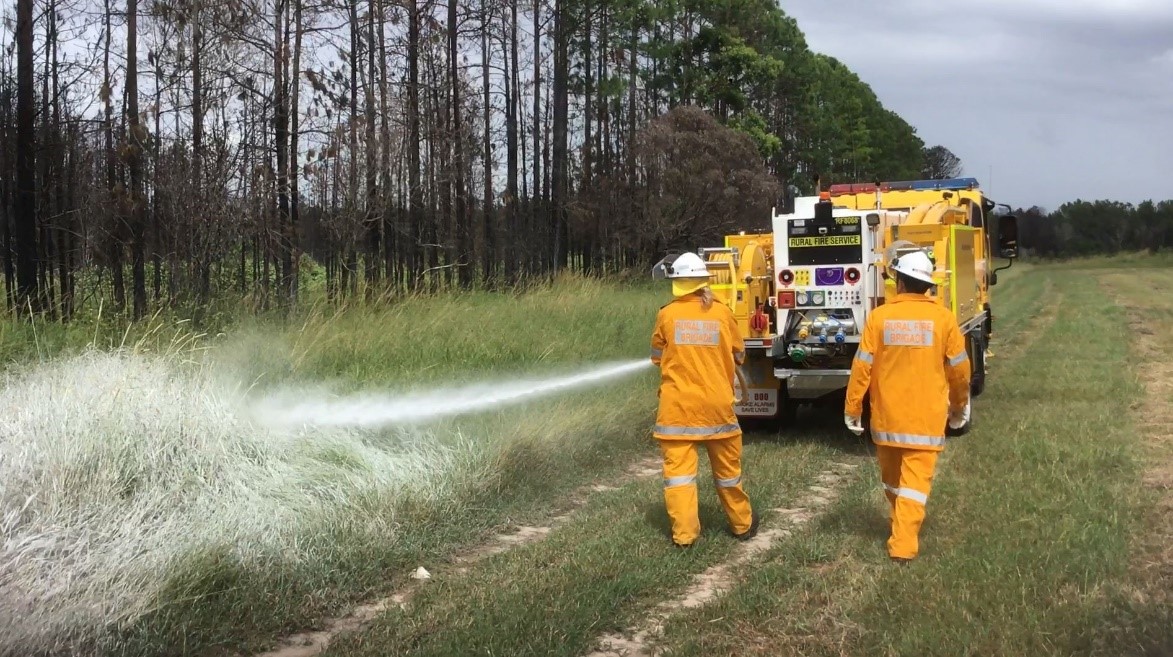Use of Water Additives in Controlling Bushfire - Information Guide
“Water Additives” is the term given to different supplements that can be combined with water when fighting fires. This additive and water solution is then either applied to a bushfire to slow the spread and intensity of the fire or applied to vegetation or property to try and prevent it from catching fire.
What types of water additives are used in Queensland to help control bushfires?
Water additives are used worldwide to combat fires and have been used in Queensland for many years.
There are three main categories of water additives used in Queensland:
- Class A Bushfire Foam
- water enhancers
- retardant.
What are the products made of?
Bushfire foam is basically a mix of water, synthetic detergents (similar to washing up liquid or shampoo) and corrosion inhibitors. We use several brands of bushfire foam, however their ingredients are very similar.
Water enhancers are made up of thickeners, stabilisers as well as super absorbent polymers like those found in some absorbent pads and disposable nappies. Currently, we use a water enhancer product called Blaze Tamer 380.
The basic ingredients of retardant are a mix of water, ammonium polyphosphate (also readily used as fertiliser), thickeners (gum and/or clay) and corrosion inhibitors to protect the machinery that applies the product. A red pigment made of iron oxide is also added so as the retardant can be seen on the ground.
Due to interstate firefighting arrangements between Queensland and other states and territories in Australia, brands and types of water additives may vary slightly.
The final section of this fact sheet has full safety data sheets and FAQs for particular additives used in Queensland.
Why do firefighters use additives and not just water?
Water additives reduce fire intensity and spread more effectively than water alone, giving firefighters a greater chance of successfully protecting life and property. By using these additives, firefighters can use the available water more efficiently and effectively, which is important when water is in short supply during hot dry conditions.
The use of water additives gives firefighters the option to fight fires 'indirectly' as they can create chemical fire-breaks ahead of the threatening fire without having to clear or back-burn vegetation. However chemical fire breaks are not always the most effective option, and vegetation removal may still be the most effective method to contain the particular fires.
How are the products applied?
Water additives (bushfire foam, water enhancers and fire retardants) can be applied either by ground-based firefighting crews using a firefighting appliance or by aircraft.
Our appliances carry and are capable of applying bushfire foam to fires. This is done through normal water application methods using a vehicle mounted firefighting pump and hoses. We have purpose-built vehicles with high pressure pump capability (similar to a high-pressure cleaner) that can induce bushfire foam. We also have state of the art appliances equipped with Compressed Air Foam Systems (CAFS) which use water, bushfire foam concentrate and compressed air to create thick blankets of firefighting foam using small amounts of water. This makes our water usage more effective and efficient. A 'CAFS' blanket can be used to cover vegetation and structures to help protect them from the threatening fire.
In Queensland, water enhancers are applied by aircraft. The chosen additive is mixed with water while the aircraft is on the ground, or in the case of helicopters it can be injected while in flight. They are transported to the fire in the 'belly tank' of the aircraft or in a 'bucket' slug from underneath to the pre-determined location it is to be used. While flying low to the ground, the pilot will release the mixture onto the surface of the vegetation and/or asset to be protected.
Several different types of aircraft are used for this task ranging from small to medium helicopters, small aeroplanes (Single Engine Air Tankers – 'SEATs') and 'Large / Very-Large Air Tankers' (LATS or VLATs). Large and Very Large Air Tankers are specially converted passenger jets modified to carry and drop large volumes of water or a water-and-additive mixture.




How do the additives work?
Bushfire foams were developed in the mid-1980s for fighting bushfires. Bushfire foam lowers the surface tension of the water, which assists in the wetting and saturation of carbonaceous fuels with water. This aids fire suppression and can prevent re-ignition. Depending on the ratio of foam concentrate to water, a blanket of air-filled foam bubbles can be layered over the surface of an object to try and stop it catching fire. Because bushfire foam is still predominantly water it generally evaporates quickly, which makes it unsuitable for some conditions.
Water enhancers are created by mixing polymers in the form of dry powder with water. The powder can absorb large volumes of water which creates a clear substance, similar to jelly. Like bushfire foams, water enhancers can either be applied directly to the fire or used to coat vegetation and other surfaces to minimise the chance of them catching fire. Unlike bushfire foams, water enhancers don't evaporate readily, enabling them to be used further in front of a threatening fire as they stay in place for longer.
Bushfire retardants can work in several ways, depending on the type of retardant and the environment in which they are used. Generally, bushfire retardants, when exposed to heat create a solid shield around a surface that acts as thermal protection from the fire.
Some retardants when heated also release non-flammable carbon dioxide, which displaces the oxygen around the retardant and stops the fuels from igniting.
Fire retardants are almost always spread on vegetation or surfaces ahead of the approaching fire which helps firefighters reduce the fire threat to life and property.
What do the products look like?
The different types of water additives have distinctly different appearances and can be easily identified. The appearance of bushfire foam, when applied to a surface will range from a thin milky white coloured solution to thick snow like soap suds. The appearance depends on how it is applied, and the ratio of bushfire foam concentrate to water that is used.
Water enhancers are often referred to as 'firefighting gel' due to its clear jelly-like appearance on surfaces.
Fire retardants are usually red or orange in colour, due to the coloured pigment (iron oxide) added to the retardant to easily allow firefighters to identify where the retardant has been applied.
Can the water additives used in controlling bushfires harm me, my pets or my livestock?
Although studies show that the risk of adverse health effects from contact with these additives is low, the additives can produce minor irritant effects and contaminated water is unsafe for drinking (both by humans and animals). The nature of the products can also create slippery surfaces creating a slip-and-fall hazard. By taking these simple precautions, you can greatly reduce the chance of harm:
- Do not enter areas where bushfire foam, water enhancers or retardants are still present.
- Avoid touching any objects coated in bushfire foam, water enhancer or retardant.
The ammonium polyphosphate salts used in firefighting retardant should not be confused with nitrogenous fertilisers which may be harmful to cattle and other livestock.
If you believe that you have been exposed to a water additive and you feel unwell, contact the Poisons Information Centre on 13 11 26.
Can the chemicals harm the environment?
What do I do if I get one of the products on me or my pets?
If you or your pets inadvertently come into contact with a firefighting water additive, wash the skin with mild soap and cold water as soon as practicable, remove any contaminated clothing and, using rubber gloves, hand wash in cold water.
If you believe you have been exposed to a water additive and you begin to feel unwell, contact the Poisons Information Centre on 13 11 26.
How do I clean it up?
After the threat of fire has passed, and while wearing gloves, clean water additive residue off surfaces simply by using a mild soap and rinse with water. A scrubbing brush or stiff bristled broom can also be used. Ensure run-off does not enter waterways, including storm-water system.
What if my water supply gets contaminated?
If you have a domestic water tank supply, you can take a few precautions to not compromise your water supply. If there is a fire in your area, you can disconnect your water tank from the roof catchment (i.e. disconnect your down pipe from entering the tank). This will also reduce the likelihood of smoke and ash entering your water supply. Make sure you do not disconnect the supply side of your tank, especially if you are relying on it for firefighting pumps or sprinklers.
The normal concentrations of water additive used should not present a risk to your health. However, it may affect the taste and potability of the water. Foam products also contain detergents so the water in the tank may froth up.
As a precaution, if you believe firefighting water additives have entered your water supply, the tank and supply pipes should be drained and cleaned along with the collection surfaces. The first flush of water should be discarded. It can then be allowed to refill using rainwater or filled with water using a licensed water-carrier.
Where do I get more information?
For more information on the water additive chemicals we use for firefighting as well as frequently asked questions and more detailed Safety Data Sheets, visit the following websites:
Biocentral Laboratories Blaze Tamer 380
We wish to acknowledge and thank the Tasmanian Fire Service for their consultation and contribution to the development of this document.
